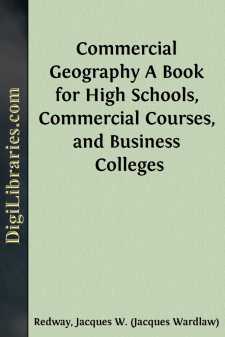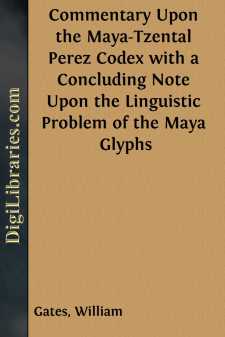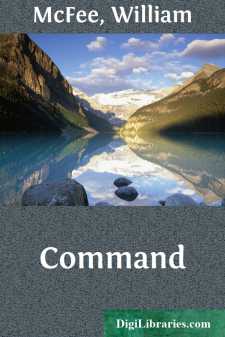Categories
- Antiques & Collectibles 13
- Architecture 36
- Art 48
- Bibles 22
- Biography & Autobiography 813
- Body, Mind & Spirit 142
- Business & Economics 28
- Children's Books 15
- Children's Fiction 12
- Computers 4
- Cooking 94
- Crafts & Hobbies 4
- Drama 346
- Education 46
- Family & Relationships 57
- Fiction 11829
- Games 19
- Gardening 17
- Health & Fitness 34
- History 1377
- House & Home 1
- Humor 147
- Juvenile Fiction 1873
- Juvenile Nonfiction 202
- Language Arts & Disciplines 88
- Law 16
- Literary Collections 686
- Literary Criticism 179
- Mathematics 13
- Medical 41
- Music 40
- Nature 179
- Non-Classifiable 1768
- Performing Arts 7
- Periodicals 1453
- Philosophy 64
- Photography 2
- Poetry 896
- Political Science 203
- Psychology 42
- Reference 154
- Religion 513
- Science 126
- Self-Help 84
- Social Science 81
- Sports & Recreation 34
- Study Aids 3
- Technology & Engineering 59
- Transportation 23
- Travel 463
- True Crime 29
Sort by:
CHAPTER I GENERAL PRINCIPLES Commerce and modern civilization go hand in hand, and the history of the one is the history of the other; and whatever may be the basis of civilization, commerce has been the chief agent by which it has been spread throughout the world. Peoples who receive nothing from their fellow-men, and who give nothing in return, are usually but little above a savage state. Civilized...
more...
In preparing maps showing the geographic distribution of North American mammals we have found in the literature conflicting statements concerning the subspecific identity of several rodents. Wherever possible, we have examined the pertinent specimens. Results of our examination are given below. Our studies have been aided by a contract (NR 161-791) between the Office of Naval Research, Department of...
more...
IN preparing maps showing the geographic distribution of North American lagomorphs, some conflicting statements in the literature have led us to examine the pertinent specimens of the Florida cottontail and the Audubon cottontail with results as given below. The study here reported upon was aided by a contract between the Office of Naval Research, Department of the Navy, and the University of Kansas...
more...
In preparing maps showing the geographic distribution of North American mammals we have found in the literature conflicting statements and questionable identifications, which have led us to examine the specimens concerned with results as set forth below. Our studies have been aided by a contract (NR 161-791) between the Office of Naval Research, Department of the Navy, and the University of Kansas....
more...
In preparing maps showing the geographic distribution of North American microtines, conflicting statements in the literature and identifications that, if accepted, would result in improbable geographic ranges have led to the examination of pertinent specimens with the results given below. The studies here reported upon were aided by a contract between the Office of Naval Research, Department of the...
more...
by:
J. Knox Jones
In the past several years the United States National Museum has received a large number of mammals from central and southern Korea through the auspices of the Commission on Hemorrhagic Fever of the Armed Forces Epidemiological Board. Among these Korean collections are more than a hundred specimens of a murine rodent originally described as "Micromys speciosus peninsulae" by Oldfield Thomas but...
more...
by:
William Gates
THE PEREZ CODEX The Perez Codex was discovered just fifty years ago by Prof. Léon de Rosny, while searching through the Bibliothèque Impériale, Paris, in the hope of bringing to light some documents of interest for the then newly awakened study of Pre-Columbian America. It was found by him in a basket among a lot of old papers, black with dust and practically abandoned in a chimney corner. From a...
more...
FOREWORD. The first volumes of the "American Luther" we selected for publication were his best commentaries, then eight volumes of his Gospel and Epistle sermons and one volume of his best catechetical writings. These rich evangelical works introduced us to the real Luther, not the polemical, but the Gospel Luther. They contain the leaven of the faith, life and spirit of Protestantism. We now...
more...
HE following sheets contain the substance of a course of lectures on the laws of England, which were read by the author in the university of Oxford. His original plan took it's rise in the year 1753: and, notwithstanding the novelty of such an attempt in this age and country, and the prejudices usually conceived against any innovations in the established mode of education, he had the satisfaction...
more...
by:
William McFee
She was one of those girls who have become much more common of late years among the upper-middle classes, the comfortably fixed classes, than they have ever been since the aristocracy left off marrying Italian prime-donne. You know the type of English beauty, so often insisted on, say, twenty years ago—placid, fair, gentle, blue-eyed, fining into distinction in Lady Clara Vere de Vere? Always she was...
more...











